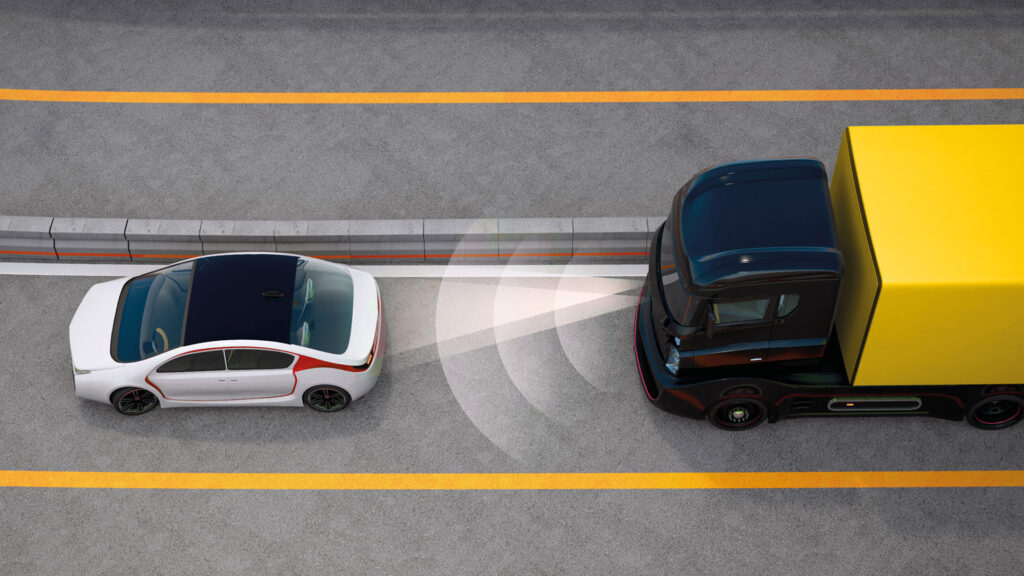The logistics and transportation industry is undergoing a major transformation with the advent of autonomous vehicles (AVs). From self-driving trucks to automated drones, autonomous technology is optimizing supply chains, reducing costs, and improving delivery efficiency. Companies like Tesla, Waymo, and TuSimple are pioneering autonomous freight solutions, signaling a shift toward AI-driven logistics that could reshape global trade.
Key Technologies Powering Autonomous Freight Shipping
1. AI and Machine Learning for Navigation
- Autonomous freight vehicles rely on AI-powered decision-making systems that process vast amounts of data from cameras, sensors, and LiDAR.
- Machine learning enables vehicles to predict road conditions, optimize routes, and react to obstacles in real time.
- AI-driven logistics software enhances fleet management and predictive maintenance.
2. LiDAR and Sensor-Based Perception
- Light Detection and Ranging (LiDAR) creates 3D maps for accurate navigation.
- Radar and ultrasonic sensors help detect nearby objects and measure distances.
- Computer vision aids in reading road signs, traffic signals, and lane markings.
3. Connectivity and IoT Integration
- Vehicle-to-Vehicle (V2V) and Vehicle-to-Infrastructure (V2I) communication allows trucks to share data and coordinate movements.
- IoT-enabled sensors track cargo conditions (e.g., temperature-sensitive goods).
- 5G networks ensure low-latency communication for real-time decision-making.
4. Autonomous Truck Platooning
- Involves multiple trucks moving in a synchronized convoy, reducing air resistance and fuel consumption.
- Connected via wireless communication, the lead truck controls acceleration and braking for the others.
- Improves fuel efficiency by up to 10% and enhances road safety.
Advantages of Autonomous Freight Vehicles
1. Reduced Transportation Costs
- Eliminates the need for long-haul truck drivers, lowering labor costs.
- Improves fuel efficiency through optimized route planning and platooning.
- Reduces maintenance expenses by preventing human driving errors.
2. Enhanced Safety and Fewer Accidents
- Human fatigue and distraction are major causes of trucking accidents; AVs remove these risks.
- AI-driven decision-making ensures faster reaction times than human drivers.
- Companies like Waymo have reported significantly lower accident rates in autonomous testing.
3. Faster and More Efficient Deliveries
- AVs operate 24/7 without rest breaks, enabling continuous freight movement.
- Predictive analytics optimize delivery schedules, reducing congestion delays.
- Automated systems can dynamically reroute to avoid traffic and hazards.
4. Environmental Benefits
- Reduced fuel consumption through efficient driving patterns and platooning.
- Lower carbon emissions as electric AVs replace traditional diesel-powered trucks.
- Autonomous systems enable better load distribution, minimizing empty runs.
Challenges and Barriers to Widespread Adoption
1. Regulatory and Legal Hurdles
- Autonomous trucks require government approval and compliance with road safety laws.
- Regulations differ across countries and states, slowing large-scale deployment.
- Liability concerns arise in case of accidents involving autonomous vehicles.
2. High Initial Investment Costs
- Developing self-driving trucks and equipping them with AI, LiDAR, and sensors is costly.
- Companies need mass adoption to achieve economies of scale and reduce prices.
- Insurance costs for AVs remain uncertain due to evolving risk assessment models.
3. Cybersecurity Risks
- AVs are vulnerable to hacking and cyberattacks, which could disrupt supply chains.
- Companies must implement strong encryption and cybersecurity protocols.
- Blockchain-based tracking systems could enhance security and transparency.
4. Workforce Disruptions and Job Losses
- The trucking industry employs millions of drivers worldwide; automation could displace jobs.
- Workforce retraining programs are needed to help drivers transition into new roles.
- The industry may shift toward human-machine collaboration rather than full automation.
The Future of Autonomous Freight Shipping
1. Hybrid Models: Human and AI Collaboration
- Many logistics companies are adopting a “driver-assist” approach, where AI handles highway driving, and human drivers manage complex urban routes.
- Remote-controlled trucks could allow human oversight from control centers.
2. Expansion of Autonomous Delivery Drones
- Drones for last-mile delivery are being tested by companies like Amazon and UPS.
- Automated cargo ships and trains could further streamline global freight movement.
3. Widespread Deployment of Smart Infrastructure
- Governments and cities will need to invest in smart highways, connected traffic systems, and AI-driven logistics hubs.
- 5G networks will enable seamless communication between AVs and road infrastructure.
Autonomous freight shipping is no longer a futuristic concept—it is a rapidly evolving reality that will reshape global logistics. While challenges remain, the long-term benefits of cost savings, efficiency, and safety will drive widespread adoption in the coming years.


